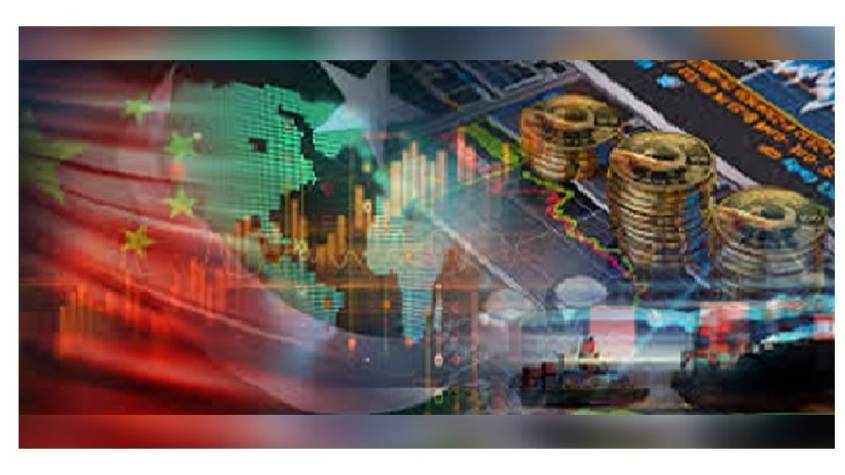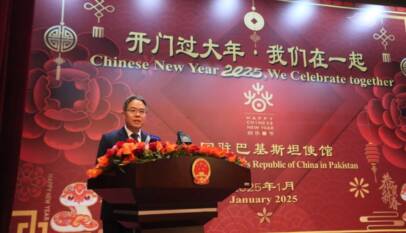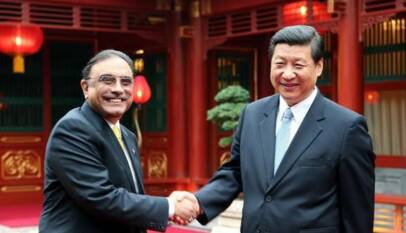Pakistan needs to learn from China to promote socio-economic development
Pakistan’s socio-economic status presented a gloomy picture before the launch of CPEC. China has set precedent in achieving social progress and economic development. China has maintained a balance between private sector and State Owned Enterprises (SOEs) and it sustained the impact of 2007-08 global financial crisis and Covid-19. Pakistan needs to learn from China’s policy making strategy. Government of Pakistan should adopt two-pronged strategy for the promotion of private sector and SOEs to promote socio-economic development in country.
ISLAMABAD: Privatisation is a unique medicine which international financial institutions (IFIs) carry in their first aid box to prescribe to everyone and anyone. The country in need of help will have to take a dose of it. The extent of the dose depends on the need of the country.
Although the concept was introduced by the fascist regime in Italy, now it is a favourite of capitalist economies and institutions. The first practical intervention on this front was noticed between 1921 and 1925 in Italy. Germany was next on the list.
The purpose of these actions was to oblige close groups or friends and create a cult of supporters. The same sentiment echoed during the privatisation process of the UK and France in the 1980s.
Friedrich von Hayek, in his book “Road to Serfdom” in 1944, propagated the concept and brought it into circles of liberal economics and governance. He continued to write in favour of privatisation and argued that it could serve the people better.
Milton Friedman and Emanuel Savas strengthened the case of privatisation. Now, it is a buzz word and IFIs deem it as a necessity to solve problems of poor countries and give a boost to economic growth and development. Although it has failed in multiple countries, still IFIs are pursuing it with full vigour.
Pakistan presents a very interesting story of privatisation and working with the IFIs. Pakistan has been a permanent client of the IFIs for decades but the interaction grew in the late 1980s. IFIs put Pakistan on the course of reform, better governance and privatisation to bring positive change.
Unfortunately, its performance started deteriorating with the passage of time. Now, Pakistan is in hot pursuit of financial resources to pay interest on a huge pile of loans, leave aside the payment of principal loans.
If China-Pakistan Economic Corridor (CPEC) is removed, all economic indicators portray a dismal picture over the past decade.
Unsatisfactory outcome
The story of privatisation is unsatisfactory. The Asian Development Bank highlighted that only 22% of privatised state-owned enterprises (SOEs) performed better, 44% were at the same performance level and performance of 34% SOEs worsened. However, Pakistan continued to privatise the SOEs.
In 2014, political economist Dr Pervez Tahir conducted a study to evaluate the results of privatisation. He highlighted very interesting cases of two companies. Both companies were profit-making entities before the government privatised them.
The new owner of a company increased electricity rates, which negatively impacted the domestic industry and market. Tahir highlighted that power consumption by the industry declined from 31% to 28%.
Despite the bad experience, the IFIs are still asking Pakistan to go for privatisation. Privatisation is being promoted on the assumption that the private sector can better manage business and services.
The private sector should focus on enhancing service efficiency, providing better services and producing quality output. Unfortunately, the experience of Pakistan does not support the argument.
An increase in the role of private sector in the education and healthcare sectors presents an entirely different picture. The private sector has turned these sectors into lucrative businesses and money-minting machines. They have given immense influence and power to the private sector, which is now influencing national policies.
The fee structure is so extractive that it has become impossible for the middle class to afford it without pain. It is failure of the state to provide basic services to citizens on the excuse of lack of resources.
Welfare of citizens
The examples discussed above, both in relation to privatisation and private sector, compel us to look at the other side of privatisation. It underscores the need for redefining the role of private sector and SOEs.
The reason is that the state needs resources to ensure the welfare of common citizens by providing them education, healthcare and protecting them from uncertainties through social safety nets.
Tax revenue alone cannot meet the demand. The government cannot rely on private sector for taxes because the private sector always wants to get maximum relief in taxes.
We have observed this phenomenon in many countries and the US is the most prominent example. The US government is complaining that big companies are not paying taxes and have invented innovative ways to avoid tax payments. It is severely impacting Washington’s ability to serve people.
Today, the US government is struggling to provide basic healthcare facilities to all citizens and devise ways to combat the problem of student loans. Even during the Covid-19 pandemic, the US government is printing money to provide relief to people but big companies are making billions of dollars.
Contrary to that, China, which has struck a balance between the private sector and state enterprises, is enjoying fruits of its wise policy.
Private sector companies like Huawei and Alibaba are growing due to a good business environment. At the same time, SOEs are also flourishing and playing a leading role.
The success of SOEs has given more strength to China and it has enough resources to meet the demand of people. China used these resources to lift 850 million out of poverty.
China was also able to sustain the impact of 2007-08 global financial crisis and Covid-19 in a better way due to better resources with the government.
Lessons to learn
Pakistan needs to learn from the examples of both the US and China. It is suggested that the government should look for a two-pronged strategy – promotion of private sector and SOEs overhaul to make them competitive.
The private sector should be provided a good business environment and rules-based competition should be promoted. However, it does not mean that state assets or enterprises should be handed over to the private sector.
Apart from that, the SOEs should be run on market principles and there should be competition between state units and the private sector, and the monopoly system should be abolished.
For instance, China adopted this strategy for the telecom sector and split China Telecom into China Telecom, China Mobile and China Unicom, and asked them to compete among themselves. It produced positive results. Pakistan should follow this example for the SOEs overhaul. Lastly, Pakistan should need to understand that there should be a balance between tax and non-tax revenue. The private sector should not be promoted at the cost of SOEs.
Tax revenue alone cannot cater to the needs of the state. Hence, non-tax revenue should be increased as well and the SOEs can play a leading role in this regard. It will help Pakistan to cope with external and internal shocks, like the way it is helping China.
Chinese Ambassador highlights significance of Third Plenary Session for China-Pakistan cooperation
The Third Plenary Session of the 20th Central Committee of the Communist Party of China ha…












